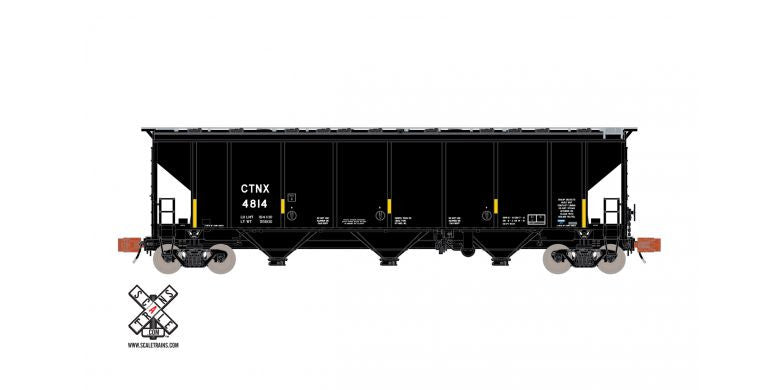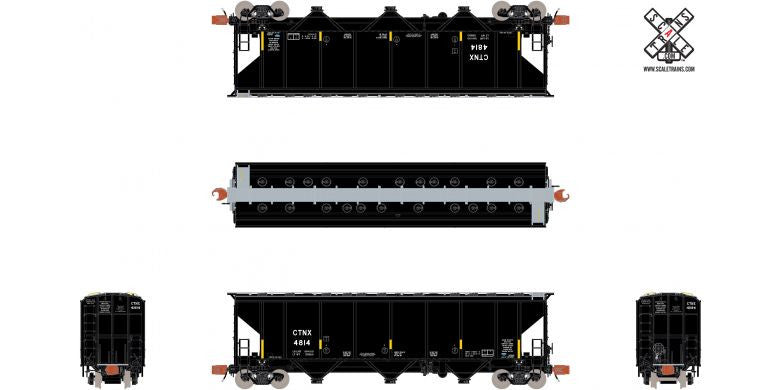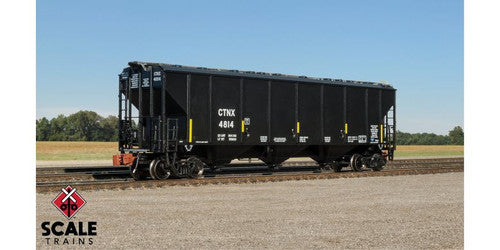This N scale carbon black covered hopper from ScaleTrains SXT32087 4727 features Continental Carbon/CTNX #4814. Note that the picture might show a different road number. It represents an era from 2005 to the present. The Series 4801 - 4920 Thrall Car Job 915 was built in 4 - 5/96. It has FRA - 224 reflective stripes, 22 round roof loading hatches, and paint that matches Tru - Color Paint color TCP - 010 Black. There are four different road numbers available, with options for 22 or 28 roof hatches. The model has finely detailed end posts and bracing, photo - etched stainless - steel running boards and end platforms, and separately - applied end ladders. The underbody brake detail is finely crafted, and it comes with body - mounted semi - scale standard Type E knuckle couplers. The Barber S - 2 70 - ton Trucks have finely rendered raised foundry data, and 33” machined metal wheels. The minimum radius is 9 ¾”, and the recommended radius is 11”. As a Rivet Counter N Scale Freight Car, it's fully assembled, with multiple road numbers. Factory - applied metal grab irons, coupler cut levers, and trainline hoses add to its realism. The intricate brake plumbing, legible printing and lettering even under magnification, and weighted design for reliable operation make it a great choice. It operates on Code 55 and 70 rail and comes in a clear jewel box packaging. Carbon black, a byproduct of the petrochemical refining industry, is a fine powder used in automotive and other industries. Covered hoppers like this have unique designs dating back to the 1920s. The 4727 cubic foot design by Thrall in 1992 is similar to traditional covered hoppers and many are still in service today. Reference: Carbon Black Cars: Freight Cars Journal Monograph #15 by Eric A. Neubauer, ISSN 0884 - 027X, 2030.



Using this N scale carbon black covered hopper model is easy. Just place it on your Code 55 or 70 rail track, and it's ready to roll. Make sure to use a track with at least a 9 ¾” minimum radius, but an 11” radius is recommended for better operation. When handling the model, be gentle with the delicate parts like the photo - etched stainless - steel running boards and separately - applied end ladders. To keep it in good condition, regularly clean the 33” machined metal wheels with a soft, dry cloth. Avoid getting the model wet as it may damage the paint and the details. Store it in the provided clear jewel box packaging when not in use to protect it from dust and scratches.









